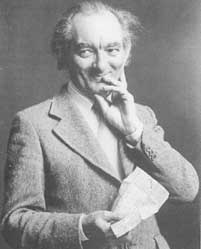THE CHRISTIAN BROTHER SCHOOLS IN DERRY
(The following is comprised of extracts from “The Brow, the Brothers and the Bogside” written by Br John Ledwidge.)
 Having seen the enthusiasm and success of the Christian Brothers in educating the poorest of the poor, and heard their story, Dr Kelly (Bishop of Derry), decided to ask for a community of these brothers for his children in Derry, and to ask that Brother Larkin would lead them. He chose well, for in Brother Larkin he had an altogether exceptional man. Having been trained by Brother Rice in Waterford, he did great work in Thurles, before moving on to Derry where he spent six years establishing the brothers and their school there. In 1860 he was asked to go to Australia where he founded two more communities and schools, both of which are still thriving, and died there in 1889.
Having seen the enthusiasm and success of the Christian Brothers in educating the poorest of the poor, and heard their story, Dr Kelly (Bishop of Derry), decided to ask for a community of these brothers for his children in Derry, and to ask that Brother Larkin would lead them. He chose well, for in Brother Larkin he had an altogether exceptional man. Having been trained by Brother Rice in Waterford, he did great work in Thurles, before moving on to Derry where he spent six years establishing the brothers and their school there. In 1860 he was asked to go to Australia where he founded two more communities and schools, both of which are still thriving, and died there in 1889.
Brother Larkin and two of his brothers arrived in Derry, in response to the Bishop’s request, on February 13th, 1854. They had taken twenty four hours to travel from Thurles via Dublin by coach, in freezing weather. They went immediately to the house called “Brow of the Hill” having been warmly welcomed by the Bishop.
The house itself, in the Bogside, had an interesting history, being built as a residence for himself by Alderman Hogg, a wealthy merchant whose quarries ther gave their name to Quarry Street. In 1846 it became the Bishop’s House and the seminary. What later became the woodwork room underneath, was then the students’ chapel, and the first floor was their dining room. The second floor was the students’ study hall. and the attics served for their dormitory. However, the seminary failed at the “Brow of the Hill” because of lack of money and Dr. Maginn, the Bishop, died there in 1849 of typhus. The Sisters of Mercy, who were already doing great work fot the poor in Derry, took it over as a school until 1854, when they moved to Fransis Street, and the brothers moved in.
The Derry to which the brothers came was not an educational wilderness – on the contrary, there were over thirty schools in and around the city, which Catholics could attend. However, they were pay-schools, where the education was sometimes of poor quality, and which charged up to £5 a quarter for lessons. As such, they were out of the question for the children of the Bogside.
On March 13th, 1854, Brother Larkin opened his school for the first day, expecting a small number to start with and then hoping to attract more as Edmund Rice, his mentor, had done in Waterford. Instead, 290 boys flooded in and the brothers were swamped. Brother Larkin took a hundred senior boys on the second floor, the next hundred were on the ground floor, and older boys looked after the ninety young ones in the basement, until another brother could arrive a fortnight later.
The first boys to attend the Brow of the Hill School, according to the early records, were drawn from the Bogside: St. Columb’s Wells, the Lecky Road, Bishop Street Without, Rossville Street, Nelson Street, Wellington Street, Chamberlain Place, Eden Place and Long Tower Street.The registers show the occupations of their fathers, which reflect the common occupations in Derry in the 1950s. They were carters, showing the extent of horse-drawn traffic, dockers for unloading cargoes on the quays, workers in the tobacco factories and the distilleries, and ferrymen. The most common entry among fathers’ occupations was “unskilled (and usually unemployed) labourer” and how often, alas, was a boy registered as “orphan”!
The arrival of Brother Conway in 1864 coincided with a rapid rise in the prosperity of the city. There was a large increase in the volume of shipping in the port of Derry and the first significant development of a ship-building and ship-repairing industry. The shirt-making industry as a factory operation began about 1850 and became a major industry from the 1860s onwards. Derry became a leading centre of communications with the opening of a railway line Coleraine and another to Portadown. Later two narrow-guage railways linked Derry with a great part of Donegal, in the latter years of the century.
In the circumstances, Brother Conway decided that this was where opportunity lay and he and the other brothers began immediately shaping the curriculum towards a technical and practical education that would look towards the job-opportunities that the new prosperity of Derry was offering.
(More to follow)
